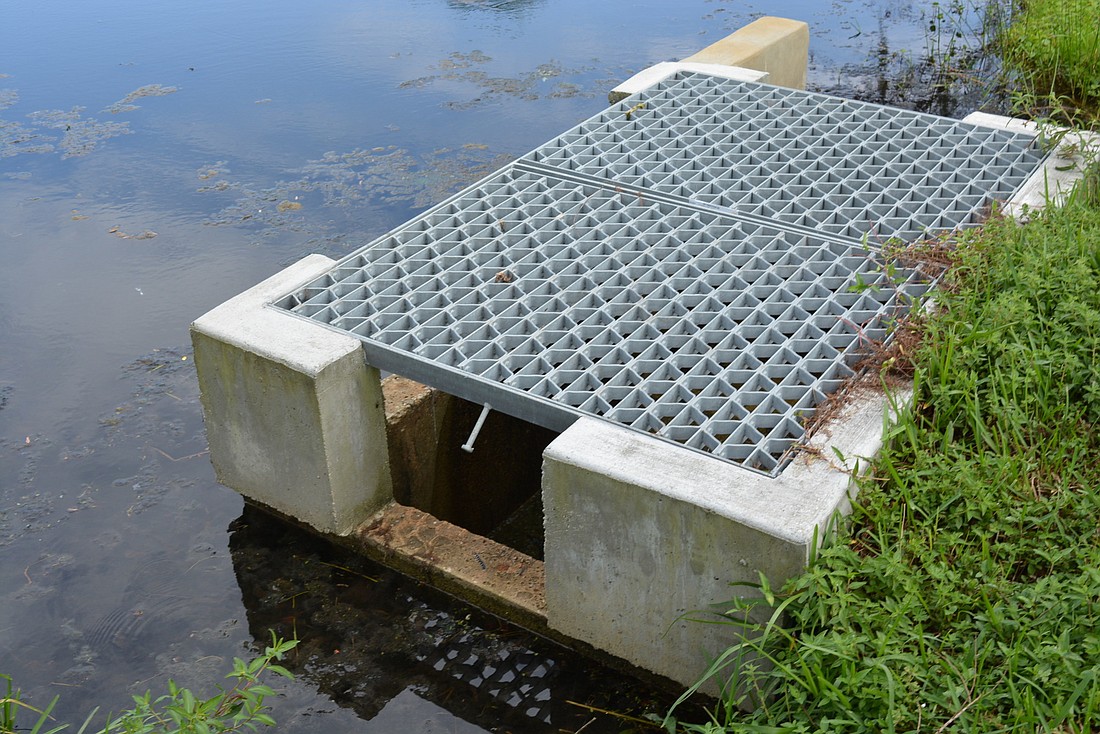- July 17, 2025
-
-
Loading

Loading

County commissioners have often highlighted water quality as one of their top priorities.
Commissioners and county staff plan to take several steps that will help achieve part of that goal in the next few years.
In the past month, commissioners have directed staff to seek changes to the county’s stormwater rates and stormwater programs to improve the quality of stormwater in watersheds, as well as implement changes to sewage valves to allow fewer sewage spills.
County staff is seeking changes to the county’s Stormwater Environmental Utility Division, with the hopes of improving the quality of the stormwater that ends up in the county’s watersheds and Sarasota Bay.
Since the county completed a series of stormwater projects in 2005, Director of Public Works Spencer Anderson said the number of flood-related insurance claims in the county has dropped to nearly zero.
According to county documents, the county experienced the most claims in 1992, with about 120 building damage claims and 65 content damage claims. There were about 105 total claims after Tropical Storm Gabrielle in 2001, but since then, claims have trended downward.
Because of this decrease, the county is saving about $7.5 million a year in insurance premiums, Anderson said.
The county will now develop a new rate structure that reflects the county’s revisions, as well as a revised stormwater program.
Staff will overhaul the county’s current stormwater ordinance, which has been in place since 1989. Anderson said he was unsure if the ordinance had been reviewed since its implementation, and staff would like to see if “it’s keeping up with best practices.”
Along with that, staff also will asses a new rate system, which has not been modified since 2009, with the hopes of integrating the new system into the 2022 fiscal year budget.
Currently, three types of assessments are included in the system: a $3.10 fee per parcel, a $23.10 per Equivalent Stormwater Unit — which is one single-family home — and $64.45 per ESU for maintenance. This means the average homeowner in the county pays $90.65 annually for stormwater utility.
One priority of the revised rates program, Anderson said, is to allow staff to seek federal and local grants for future stormwater initiatives.
Historically, the county’s stormwater initiatives have been used to prevent flooding of structures. Anderson said he’d also like to enhance the county’s maintenance standards and pursue projects that help protect Sarasota from sea level rise.
Commissioner Christian Ziegler also raised concerns with the amount of sewage spills the county has seen due to air release valves being struck by passing vehicles.
He questioned whether there is any preventive measures the county can take to reduce the number of spills.
On Sept. 7, an incident report was filed with the Florida Department of Environmental Protection that stated a car ran over an air release valve near Sun Bonnet Boulevard.
The incident resulted in approximately 1,000 gallons of treated reclaimed water spilling into the street and a nearby stormwater structure. Crews recovered about 300 gallons of the reclaimed water that had mixed with stormwater.
“A lot of our spills are coming from people just accidentally bumping into these things, and it’s really unfortunate because then we get blamed for the spill, we get reported for it, [and] we get a fine for it when it’s totally preventable,” Ziegler said.
Director of Public Utilities Mike Mylett told commissioners that staff is working to install extra measures to protect those air release valves that are often struck by vehicles.
About 5% of the county’s valves currently have protection, Mylett said, and staff has developed a list of other high-potential areas. He hopes to create a plan, whether it’s adding a cement block or bollards around the valves, to stop vehicles before they hit the valves.
Additionally, County Administrator Jonathan Lewis said staff is looking at implementing these changes with the next generation of valves, so they don’t have the same problem in the future.
By adding these extra measures, Mylett said the county is less likely to experience sewage spills.